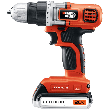If you're anticipating a major home renovation, then you'll need to know the difference between load- and non-load-bearing walls. Why? Because a load-bearing wall is one that holds or transfers the weight (the load) from one section of the structure to another. If you remove part or all of a non-load-bearing wall, then the remainder of the structure will stay intact. But if you remove all or part of a load-bearing wall, then part or all of the structure will most likely collapse.
Identifying load-bearing walls is more difficult in newer homes than in older structures. Older homes use all of the exterior walls as load-bearing walls, while some newer homes use only the front and back walls to bear the load. How can you identify the load-bearing walls in your home? Try these tips:
Another visual cue of load-bearing walls are those that end in large posts or columns. While the column might simply appear to be decorative, it probably helps support the weight of other walls and portions of the roof above.
If you have any doubt as to which walls are load-bearing walls, consult with a professional structural engineer before modifying your existing structure. Moving or modifying a load-bearing wall without proper bracing can cause not only structural damage, but the ensuing collapse could end your life.

MAX Power! A powerful lithium-ion drill/driver that delivers 0-to-650 RPM and 115 inches-per-pound of torque in a lightweight, easy-to-use package. An anti-slip soft grip and LED worklight makes this tool a delight to use. Check out Black & Decker 20-Volt Cordless Drill/Driver today!
Recognizing a load-bearing wall isn't all that difficult, though it can save you a huge amount of money, and time. All ...
Discover MoreHomes and business suffer plenty of wear and tear. Leaning to fix cracks in the walls of your home or business can help ...
Discover MoreIf you are thinking of hanging anything on your walls, then chances are you know that it is best to hang them on a wall ...
Discover MoreThere are currently no comments for this tip. (Be the first to leave your comment—just use the simple form above!)
Copyright © 2025 Sharon Parq Associates, Inc.
Comments